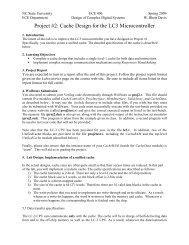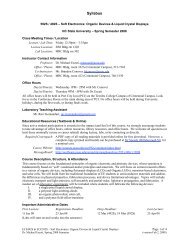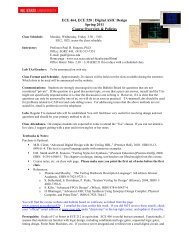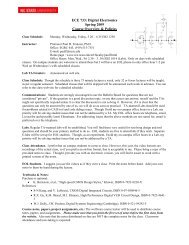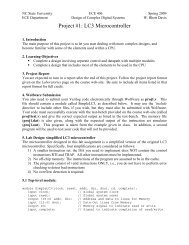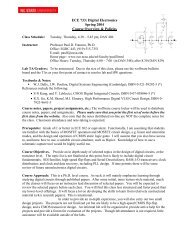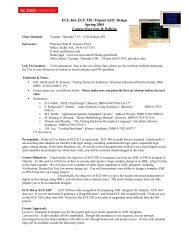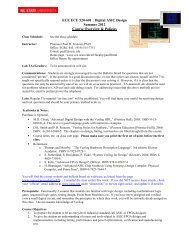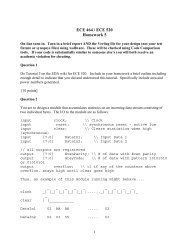Project One Report
Project One Report
Project One Report
You also want an ePaper? Increase the reach of your titles
YUMPU automatically turns print PDFs into web optimized ePapers that Google loves.
ECE 406: <strong>Project</strong> <strong>One</strong> <strong>Report</strong> Barwick<br />
IV. LESSONS LEARNED AND CONCLUSION<br />
This project has provided some important lessons; including writing better<br />
individual module test benches and making sure the design requirements are<br />
correct. While it is difficult test each module exhaustively, it is better to put the time<br />
into debugging a single module rather than trying to find the bug once the system<br />
has been put together. Also, before trying to implement a design, ensure that you<br />
have the design requirements correct not only for the entire system, but for each<br />
module. This can save a lot of headaches when testing.<br />
This project has also provided some insight on how to deal with complex<br />
digital systems such as the LC-3 microprocessor. Using a top down design style can<br />
help one break up the problem into simple, manageable parts. The design technique<br />
used in this project can be scaled to bigger and much more complicated digital<br />
systems such as today CPUs. The techniques used are very similar to the techniques<br />
that companies such as Intel or AMD use when designing their complex processors.<br />
Page | 4



